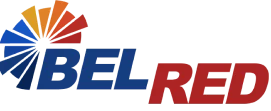Weatherizing your home is one of the leading ways to create a more airtight, efficient home. It can reduce or eliminate air leaks, which can keep your conditioned air, whether warm or cool, inside or out of your home—wherever you prefer it to be depending on the season.
Many do not know, however, that proper steps must be taken to ensure safety within the home when going through (and after) the weatherization process.
Believe it or not, weatherization can lead to some safety risks and cause some unwanted hazards if all appropriate steps are not taken and a great deal of attention is not paid to ventilation in the home. Many of these risks come into play when a home with some type of fuel burning system is used.
These systems, such as a common gas furnace, gas dryer, fireplaces, boilers, water heaters, and more require an intake of air in order to operate properly. All of these gas-burning units require combustion during operation, which requires air from an outside source.
It’s clear that the main goal of weatherization is to seal your home properly in order to save as much energy as possible. The goal is to manage (and reduce) the amount of wasted conditioned air out of or unconditioned air into the home. However, when proper ventilation is ignored after a complete weatherization process, the risks for combustion problems with these gas systems can greatly come into play.
Once your home is sealed, there must be a good source for “make-up” air getting to them in order to remain properly functional and safe. If these systems cannot get this new air, the problems begin. They may begin to draw air from less than desirable places. Backdrafting and dirty air recycling can occur, which can have dangerous consequences. Combustion byproducts, such as carbon monoxide, can potentially get into the home, which can be extremely dangerous.
Modern building codes require make-up air inlets and ventilation sources so these combustion problems don’t occur. A qualified and knowledgeable contractor will take appropriate steps to make sure these problems are avoided before (or while) going through a full home weatherization.
With any major home performance project, it’s a great idea to call in a qualified professional like BelRed before making major changes to your home. Not only will they provide the best recommendations for maximizing your home, we will make sure your home is safe after all of the renovations, installations or upgrades. Give us a call today to set up an appointment so you can safely begin and complete the home weatherization process.







